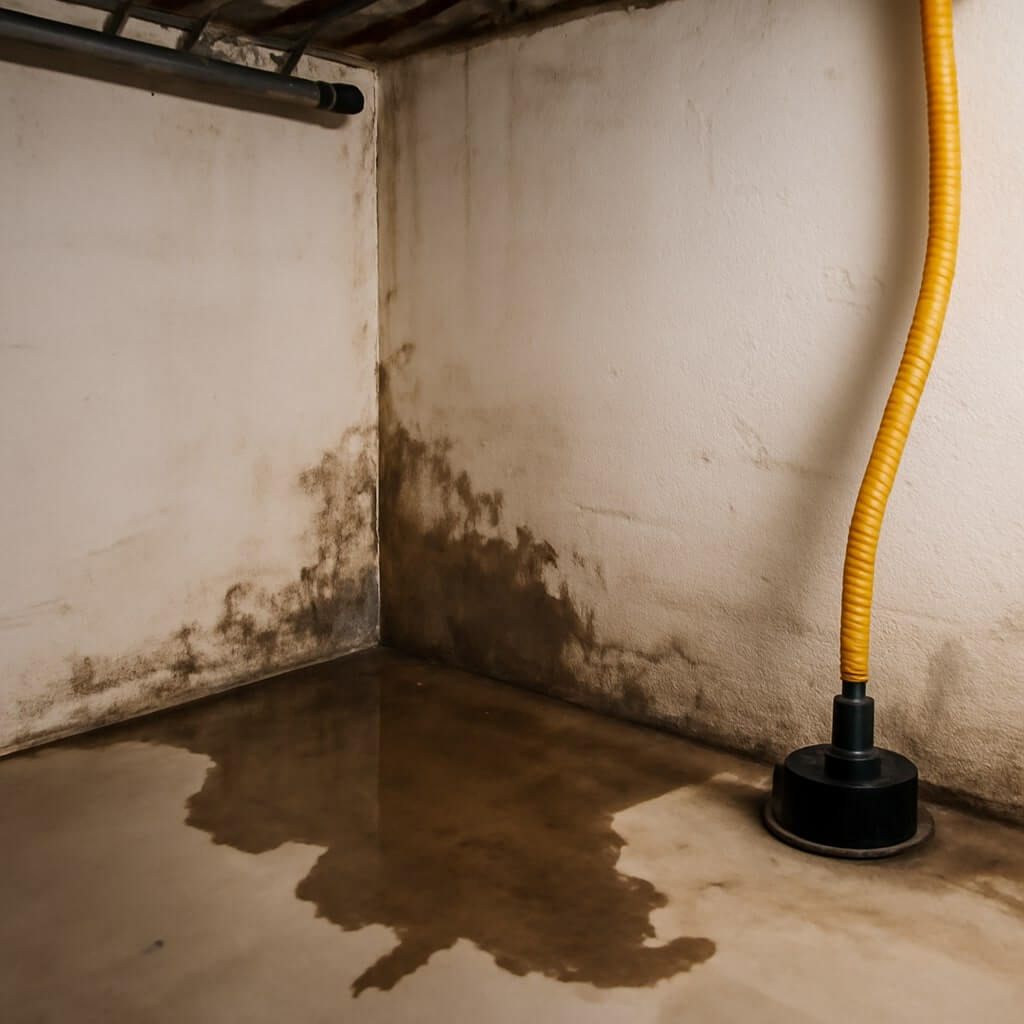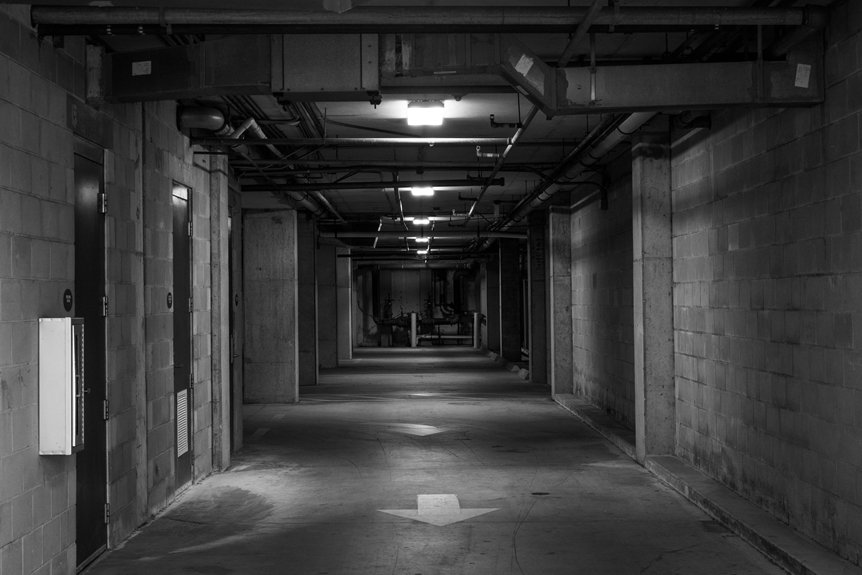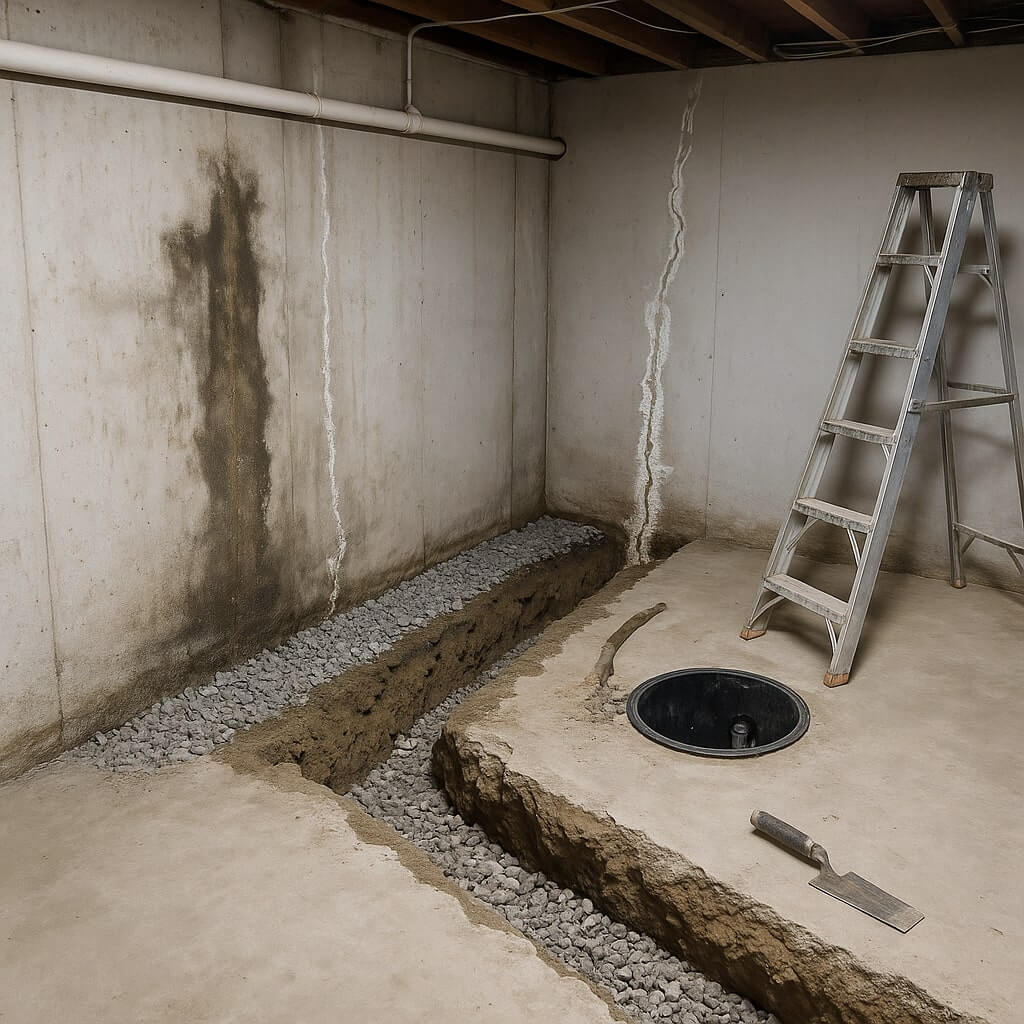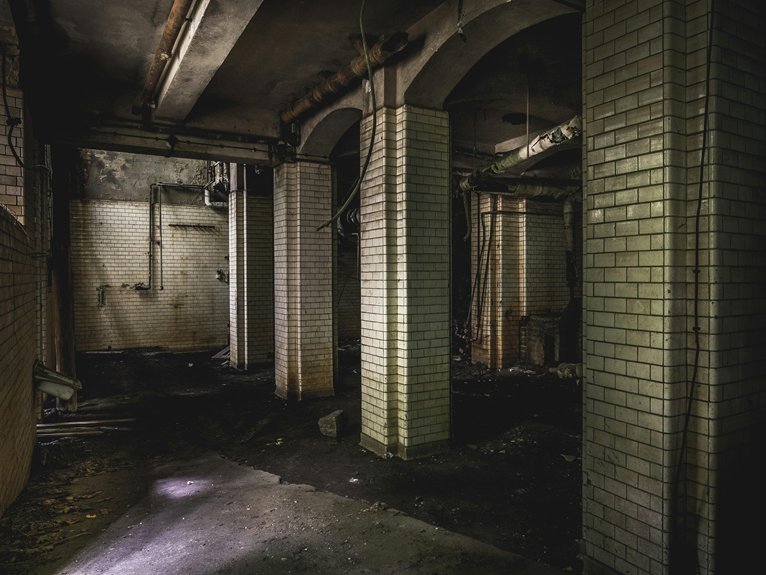When it comes to basement waterproofing in Blue Springs, MO, you might be making some vital mistakes without even realizing it. From ignoring essential exterior drainage systems to neglecting those foundation cracks, these oversights can lead to serious water intrusion issues. Understanding these pitfalls is important for maintaining a dry and safe basement. Let’s explore these common errors and how you can easily avoid them to protect your home.
Key Takeaways
- Neglecting regular gutter cleaning can lead to clogs, causing water to pool around your foundation and increase the risk of basement flooding.
- Improper soil grading around the home may direct water towards your foundation, exacerbating moisture issues and leading to costly repairs.
- Failing to seal cracks and gaps in walls can permit water intrusion, making it essential to use high-quality sealants and address all openings.
- Not installing or maintaining sump pumps properly can result in overwhelmed systems during heavy rain, increasing the likelihood of basement water accumulation.
- Overlooking the importance of managing indoor humidity levels can lead to mold growth and moisture problems in your basement, requiring effective ventilation strategies.
Ignoring Exterior Drainage Systems
When you overlook the importance of exterior drainage systems, you risk serious water issues in your basement.
Proper exterior drainage is essential for effective water diversion, channeling rainwater away from your home. Without it, water can pool around your foundation, leading to leaks, mold, and structural damage.
Make sure gutters are clean and downspouts direct water at least six feet from your foundation. Consider installing a French drain or surface drains to enhance water diversion.
Regularly inspect these systems to maintain their effectiveness. By prioritizing exterior drainage, you protect your basement and preserve your home’s integrity.
Don’t ignore this critical defense!
Neglecting Foundation Cracks
Exterior drainage systems are just one part of a thorough approach to basement waterproofing. Neglecting foundation cracks can lead to serious water intrusion issues.
Regular crack assessments are essential for effective foundation maintenance. Even small cracks can grow over time, allowing moisture to seep in and compromise your basement’s integrity.
Don’t wait until it’s too late; proactively address any signs of damage. Seal minor cracks promptly, and consult a professional for larger ones.
Skipping Gutter Maintenance
Although it might seem like a minor detail, skipping gutter maintenance can lead to significant water problems in your basement.
Clogged gutters prevent rainwater from flowing properly, causing it to overflow and pool around your foundation. Regular gutter cleaning is essential to keep debris at bay and guarantee efficient drainage.
Additionally, proper downspout installation directs water away from your home, minimizing the risk of water infiltration. Make it a habit to inspect and clean your gutters at least twice a year, especially before heavy rain seasons.
This simple step can save you costly basement repairs down the line.
Inadequate Soil Grading
Proper soil grading is essential for directing water away from your foundation and preventing basement flooding.
If you notice pooling water around your home or soil that slopes toward your foundation, you might be dealing with inadequate grading.
Fortunately, there are effective solutions to correct these issues and protect your basement from water damage.
Importance of Proper Grading
When it comes to basement waterproofing, inadequate soil grading can lead to serious issues that compromise your home’s integrity.
Ensuring a proper soil slope is critical for effective drainage. If the ground around your foundation slopes toward your home, water will accumulate, increasing the risk of leaks and mold growth.
Aim for a slope that directs water away from your foundation, ideally a drop of 6 inches over the first 10 feet. This simple adjustment can save you from costly repairs and safeguard your home.
Prioritizing proper grading is essential for long-term basement protection. Don’t overlook this significant aspect!
Signs of Poor Grading
Neglecting proper grading can lead to several telltale signs that indicate inadequate soil management around your home.
You might notice:
- Water pooling near your foundation, revealing poor drainage
- Visible soil erosion or sediment buildup in certain areas
- Cracks in your foundation or walls due to shifting soil
- Wet spots in your yard or basement after heavy rain
- Mold growth or musty odors inside your home
These signs suggest that your home’s grading is insufficient, allowing water to collect and erode the soil.
Addressing these issues promptly can save you from costly basement waterproofing repairs later on.
Solutions for Soil Grading
To effectively address inadequate soil grading around your home, start by evaluating the slope of your yard. Utilize proper grading techniques to direct water away from your foundation, preventing soil erosion.
| Issue | Solution | Emotional Impact |
|---|---|---|
| Water pooling | Regrade yard | Peace of mind |
| Basement leaks | Install drainage system | Home protection |
| Soil erosion | Add retaining walls | Stability and security |
| Foundation cracks | Create proper slopes | Confidence in safety |
| Landscape damage | Plant vegetation | Beauty and tranquility |
Taking these steps guarantees your home remains dry and protected.
Failing to Seal Windows and Doors
Although sealing windows and doors might seem like a minor detail, overlooking this step can lead to significant water intrusion in your basement.
Proper window sealing and door sealing create a barrier against moisture, guaranteeing your space stays dry. Here are some essential tips to remember:
- Inspect frames for cracks or gaps.
- Use high-quality sealants designed for exterior use.
- Regularly check seals for wear and tear.
- Guarantee proper drainage around windows and doors.
- Consider weather stripping for added protection.
Using Inappropriate Waterproofing Products
Even with properly sealed windows and doors, the right waterproofing products play an essential role in protecting your basement from moisture.
You need to focus on product selection to guarantee you’re using appropriate waterproofing materials. Many homeowners make the mistake of choosing cheap or unsuitable products that can lead to future issues.
For instance, using exterior sealants inside won’t provide the necessary protection. Always opt for materials specifically designed for basement environments, such as sump pumps, drainage systems, and vapor barriers.
Research and consult with professionals to make informed choices, making sure your basement remains dry and secure for years to come.
Overlooking Interior Waterproofing Solutions
When addressing basement waterproofing, don’t underestimate the importance of interior solutions.
Common issues like moisture buildup and mold growth can often be traced back to inadequate interior measures.
Importance of Interior Solutions
While many homeowners focus solely on exterior waterproofing methods, overlooking interior solutions can lead to persistent moisture problems that undermine your basement’s integrity.
Effective interior solutions are essential for maintaining a dry space. Here are some key aspects to take into account:
- Interior drainage systems to redirect water away from walls
- Humidity control methods to prevent mold growth
- Sump pumps for efficient water removal
- Water-resistant barriers to shield walls and floors
- Regular maintenance to guarantee systems function effectively
Common Interior Issues
Ignoring interior waterproofing solutions can lead to a host of common issues that compromise your basement’s safety and functionality.
You might notice damp walls that not only create an uncomfortable environment but also foster mold growth. Mold can spread rapidly, posing health risks and damaging your property.
Additionally, neglecting these issues can lead to structural concerns, as moisture weakens foundations over time. It’s essential to address potential leaks and humidity levels promptly.
By implementing proper interior waterproofing measures, you can prevent these problems, ensuring a safe and dry basement space for years to come.
Don’t underestimate the importance of these solutions.
Effective Waterproofing Techniques
To effectively combat water intrusion in your basement, it’s crucial to implement a variety of waterproofing techniques that address both interior and exterior concerns.
Consider these effective methods:
- Install drainage systems to redirect water away from your foundation.
- Use waterproofing membranes on walls and floors to create a barrier against moisture.
- Seal cracks and gaps thoroughly to prevent leaks.
- Guarantee proper grading around your home to divert rainwater.
- Utilize sump pumps to manage groundwater levels effectively.
Conclusion
To keep your basement dry and safe in Blue Springs, MO, it’s essential to avoid these common waterproofing mistakes. By paying attention to exterior drainage systems, sealing foundation cracks, maintaining gutters, and ensuring proper soil grading, you can greatly reduce water intrusion. Don’t forget to address windows, choose the right waterproofing products, and consider interior solutions. By taking these proactive steps, you’ll protect your investment and create a healthier living environment for you and your family.




